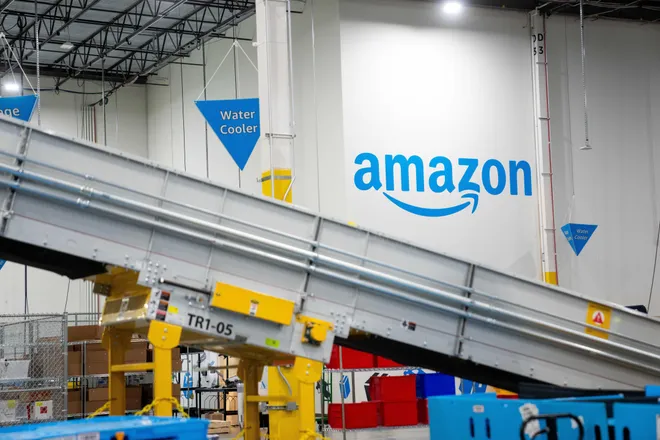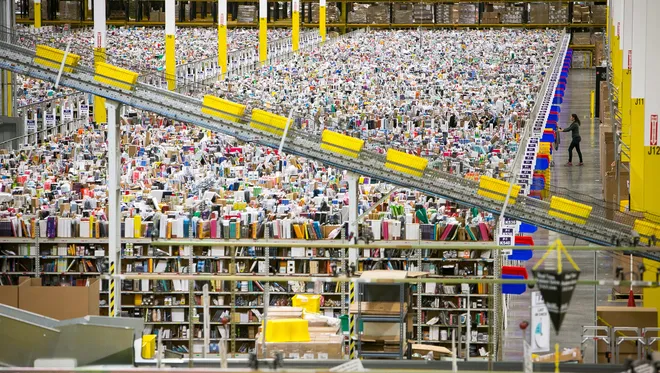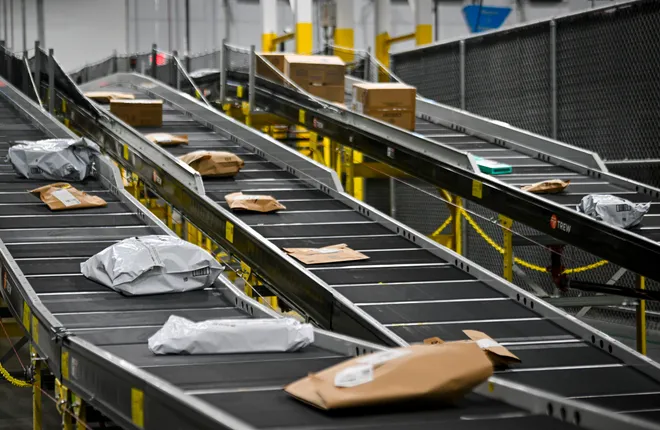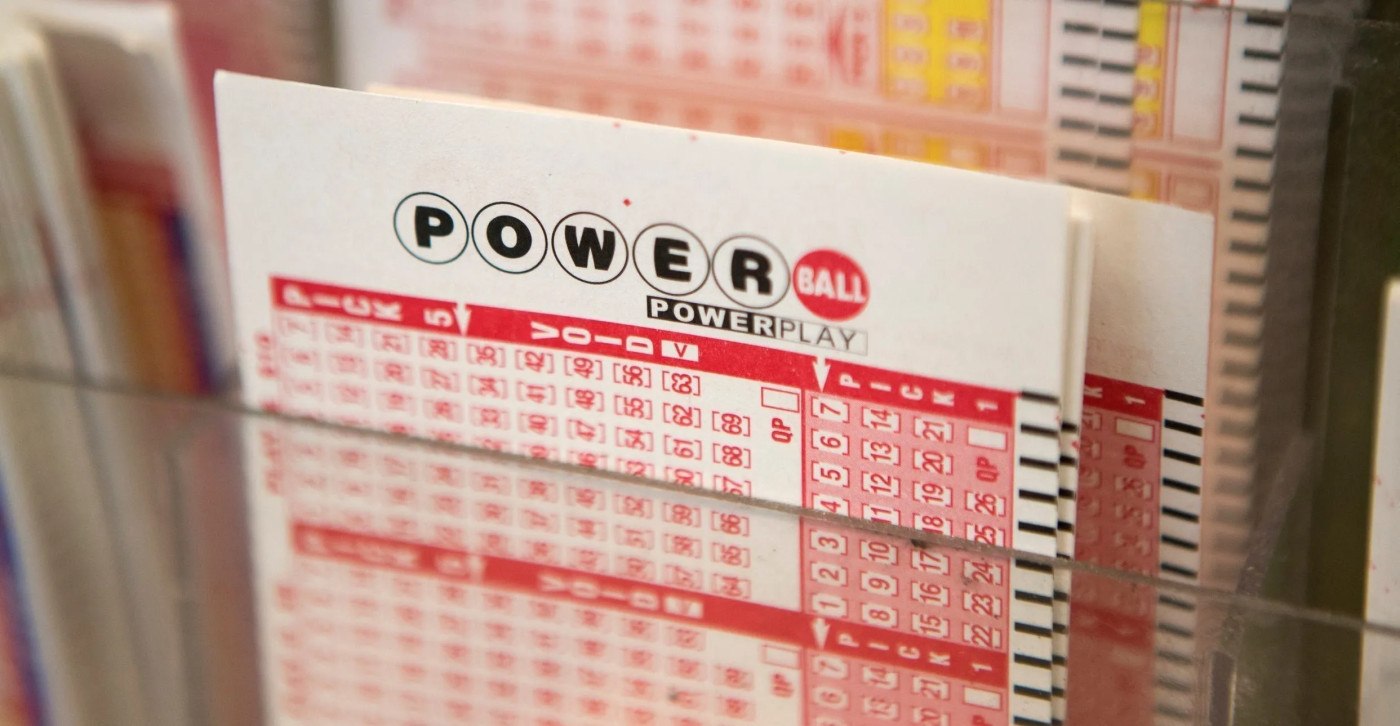
Exclusive: Amazon Prime turns 20, sets records in US deliveries and cost savings
When Amazon first introduced its Prime membership in 2005, the service aimed to guarantee free shipping of millions of items within two days and no minimum orders.
But at the time, Amazon was mainly selling books, DVDs and CDs.
Amazon next week will celebrate its 20th anniversary of its Amazon Prime membership. And now, Amazon Prime offers 300 million items across 35 categories with tens of millions of items that can be delivered the same or next day. In 2024, Amazon delivered more than 9 billion items during that time frame, the Seattle-based retailer said.
Prime customers worldwide also saved nearly $95 billion on free delivery costs, including the average U.S. Prime customer saving $500 a year on free shipping costs, Jamil Ghani VP of Amazon Prime, who leads the Prime program globally, told USA TODAY in an exclusive interview.

What is Amazon Prime?
For $14.99 a month or $139 a year, customers in the U.S. can join Prime. That gives customers access to free delivery on eligible items. Prime has also increased its other perks for members, said Ghani.
Need a break? Play the USA TODAY Daily Crossword Puzzle.
Some highlights include exclusive access to shopping events like Prime Day and other perks such as a 10-cent discount off a gallon of gas at select Amoco, AM/PM and BP gas stations, as well as free delivery on certain Grubhub+ orders . Prime members also have included access to Prime Video, Amazon Music, Amazon Photos and online and in-store discounts at Whole Foods and Amazon Fresh. There are also prescription savings via Amazon Pharmacy.
Sign up for Amazon PrimeAmazon doesn't disclose how many U.S. Prime customers it has, but Ghani said there are more than 200 million Prime members worldwide in 24 countries and every continent but Antarctica.
The average U.S. Prime customer placed nearly 100 orders last year – or nearly two orders every week.

How has Amazon Prime changed in 20 years?
There are now 20 times more selection that can be delivered twice as fast since Amazon Prime started in 2005, said Ghani.
"We find that really earns more and more of a busy household's mind share and shopping share," Ghani said referring to a term in marketing for what brand comes to mind first for a customer. "You can just count on Prime for so many additional things than back in 2005, which was a game changer then and we like to feel like we're raising the bar every single day," he said.
Amazon has increased its availability and delivery speeds by investing in its network and regionalizing its network, putting inventory closer to customers, Ghani said.
A particular focus for Amazon is to have "household everyday essentials" and pantry items, such as diapers, available quickly for consumers, he said. Last year, more than 2 billion "everyday essentials" items were delivered, most within the same day or the next day.
That was as 50% increase from the previous year's performance, Ghani said. That category is growing 90% faster than other segments of the Amazon Prime store offerings, he said.
The company's same-day network has also been expanded and now serves more than 140 metro areas in the U.S., an increase of more than 60% in 2024, he said.
Amazon has moved Prime in the last 20 years "from a service focused on delivery to a membership scheme that provides a whole host of benefits," said Neil Saunders, a retail analyst at the research and analytics firm GlobalData.
"Delivery is still important to members of Prime – and most people make their annual fee back on the savings they make from free shipping – but a lot of subscribers take advantage of other features like movie and TV content," Saunders told USA TODAY. "Amazon has created the most compelling membership program in retail which is why it has so many subscribers and high loyalty rates. There are a lot more imitations out there these days, but none of them have the firepower of Amazon Prime which means it will still be relevant over the years ahead."

What are the benefits of having Amazon Prime?
The free shipping benefits are usually what initially get consumers to subscribe to Amazon Prime and then the entertainment offerings keep consumers engaged and subscribed, said Douglas Bowman, a marketing professor at the Goizueta Business School at Emory University in Georgia. Bowman researches consumer behavior and brand and product management.
Most Prime members don’t fully realize all the benefits they have access to, Bowman told USA TODAY.
"Many consumers feel they are getting enough value from shipping alone and overlook additional benefits or don’t regularly check for added updates or perks," he said. "Amazon doesn’t always make salient many of the benefits that may be valued by only a subset of members."
No cashiers:What is Amazon's Just Walk Out technology at some retail locations?
For consumers, Amazon Prime combines shopping, entertainment, and everyday essentials into one seamless experience, said Bowman.
"It’s addicting and becomes part a consumer’s everyday life," he said.
Still, over-reliance on Prime could mean consumers "may not fully research offerings from other retailers and miss out on better deals or other products that better meet their needs," Bowman said, "In the long run, there are concerns of reduced competition in e-commerce that will lead to higher prices and reduced offerings."
Prime can also encourage over-spending by consumers, he said.
"The convenience of fast and free shipping may mean more impulse purchases. The algorithms encourage add-on purchases that can lead to unnecessary spending," he said. And with any subscription service, there is always a concern that a consumer is not using the service frequently enough to make it worthwhile but forgets to cancel, Bowman said.
Betty Lin-Fisher is a consumer reporter for USA TODAY. Reach her at [email protected] or follow her on X, Facebook or Instagram @blinfisher. Sign up for our free The Daily Money newsletter, which will include consumer news on Fridays, here.
Purchases you make through our links may earn us and our publishing partners a commission.

